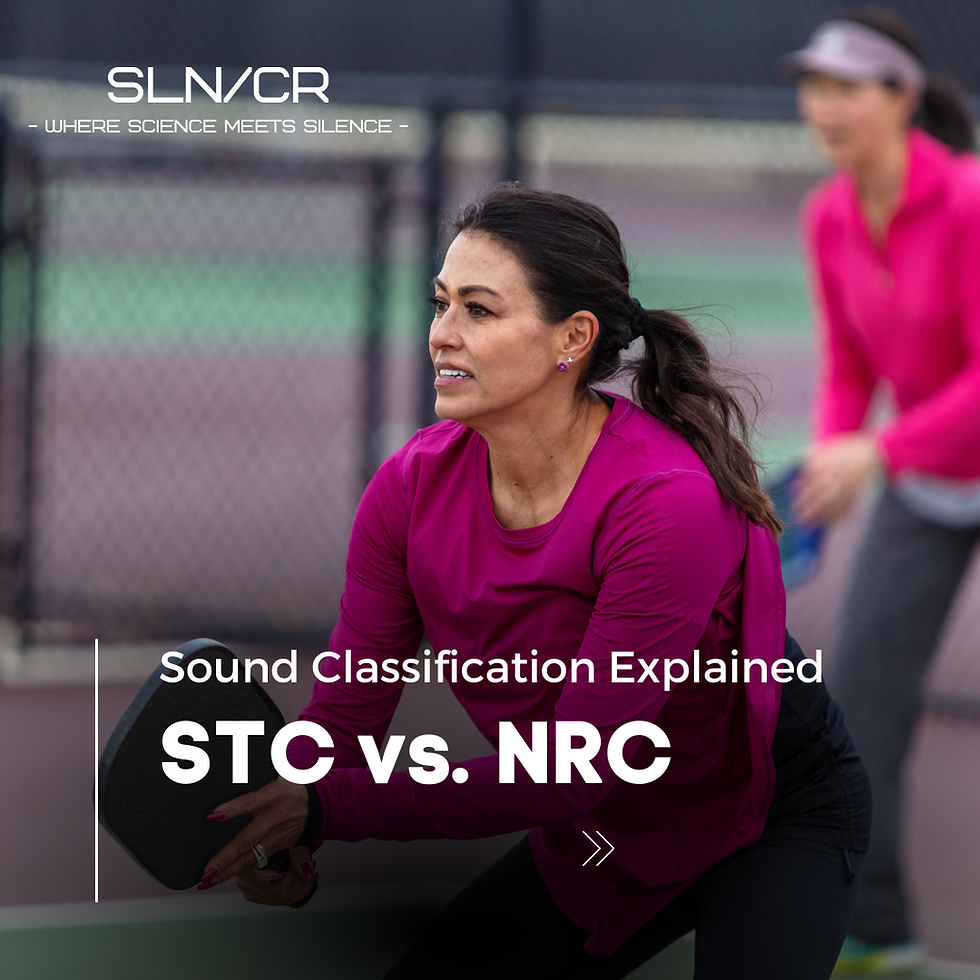Sound Transmission Class STC versus noise reduction coefficient NRC
- Eliot Arnold

- Aug 20
- 4 min read
When considering the acoustic properties of materials used in construction, two key concepts often come into play: Sound Transmission Class (STC) and Noise Reduction Coefficient (NRC). These metrics help architects, builders, and homeowners understand how well materials can block or absorb sound. But what exactly do these terms mean, and how do they differ? Let's explore STC and NRC to see how they contribute to creating a quieter, more peaceful environment.
Understanding Sound Transmission Class (STC)
Sound Transmission Class, or STC, is a numerical rating that indicates how well a building partition, such as a wall or floor, can reduce airborne sound transmission. This means it measures the effectiveness of a material or construction assembly in blocking sound from passing through it. The higher the STC rating, the better the material is at isolating sound.
How STC is Measured
STC is measured by testing how much sound a partition can stop. During testing, a range of frequencies typically encountered in human speech and general noise is played on one side of a barrier. The amount of sound that passes through is recorded on the other side. The difference in sound levels between the two sides is used to calculate the STC rating.
Importance of STC Ratings
For those involved in construction, understanding STC ratings is crucial for designing spaces that require sound isolation, such as recording studios, conference rooms, and residential buildings near noisy environments. An STC rating of 25 means normal speech can be easily understood through the barrier, while a rating of 50 or more means most sounds are blocked, providing a much quieter space.
Exploring Noise Reduction Coefficient (NRC)
While STC focuses on blocking sound, the Noise Reduction Coefficient (NRC) measures a material's ability to absorb sound. NRC is expressed as a decimal between 0 and 1, with higher values indicating better sound absorption.
Measuring NRC
NRC is measured by evaluating how much sound is absorbed by a material when sound waves strike its surface. Materials with high NRC values, such as acoustic panels or carpets, are effective at reducing echo and reverberation within a space.
Applications of NRC
NRC values are particularly important in spaces where sound clarity and quality are essential, such as theaters, concert halls, and open-plan offices. By selecting materials with high NRC ratings, architects can ensure that sound is absorbed rather than reflected, resulting in better sound quality and reduced noise levels.
Differences Between STC and NRC
Although STC and NRC both deal with sound, they serve different purposes and are used in different contexts.
STC vs. NRC: Blocking vs. Absorbing
STC is about blocking sound from traveling through walls, floors, and ceilings.
NRC is about absorbing sound within a space to minimize echo and reverberation.
Practical Implications
In practical terms, if you're trying to stop sound from leaving or entering a room, focus on STC ratings. If you're trying to improve the acoustics within a room, NRC ratings are more relevant.
Example Scenarios
Consider a home office where you want to prevent outside noise from interrupting your work. Here, materials with a high STC rating would be beneficial. Conversely, in a restaurant where you want to minimize the clatter of dishes and conversations, materials with a high NRC rating would help absorb sound, creating a more pleasant dining experience.
Enhancing Acoustic Performance
To achieve optimal sound control, a combination of materials with both high STC and NRC ratings may be necessary. This holistic approach ensures both sound isolation and absorption, creating a comprehensive acoustic solution.
Combining STC and NRC
For instance, in a multi-story building, you might use materials with high STC ratings for floors and ceilings to prevent sound from traveling between levels. At the same time, incorporating materials with high NRC ratings on the walls and ceilings of each room can reduce echo and improve sound quality within those spaces.
Tips for Improving Sound Control
Identify the Primary Need: Determine whether you need to block sound, absorb sound, or both.
Select Appropriate Materials: Use drywall, insulation, or soundproof windows for high STC. For high NRC, consider acoustic panels, carpets, or curtains.
Consider Professional Advice: Consulting with an acoustic engineer or a professional in sound design can help you choose the best materials for your specific needs.
Conclusion
Understanding the differences between Sound Transmission Class (STC) and Noise Reduction Coefficient (NRC) is essential for anyone involved in construction or renovation projects. While STC focuses on preventing sound from traveling through barriers, NRC emphasizes the absorption of sound within a space. By considering both ratings and selecting materials accordingly, you can create environments that are both quiet and acoustically pleasant.
Whether you're building a new home, designing an office space, or improving an existing structure, leveraging the right combination of STC and NRC can make a significant difference in the quality of sound control you achieve. Remember, the key is to identify your specific sound needs and choose materials that provide the desired level of noise reduction and sound absorption.


Comments